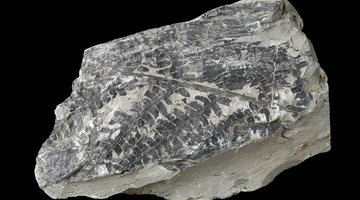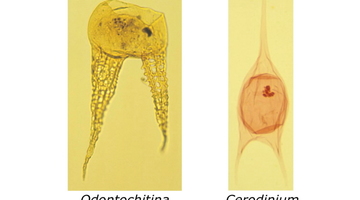Joan Wiffen and colleagues were famous for finding fossils at Mangahouanga Stream, in north-west Hawke’s Bay. Dr James Crampton, paleontologist at GNS Science, outlines some of the marine reptiles and dinosaur fossils they found. He explains why dinosaur fossils are so rare in New Zealand and how hard they are to extract from the rock.
Transcript
DR JAMES CRAMPTON
Joan and her collaborators, her colleagues, were particularly interested in fossils of land and marine vertebrates – things with a backbone. Firstly, the most common things they found were marine reptiles, so things like mosasaurs, which were giant marine lizards, and some of them overseas became gigantic, and plesiosaurs, which were the long-necked marine reptiles, things with a neck like a snake, and then of course she started finding land dinosaurs as well.
To find dinosaur bones, you have to have a very special set of circumstances, you have to have exactly the right sort of rocks were deposited in the right sort of environment. We don’t have huge areas of the right sort of rocks, and even what we have got is hugely under explored. I mean New Zealand has a tiny population of paleontologists, very few people out there looking, which is why amateurs have made such an important contribution.
Getting fossils out of the rock at Mangahouanga is very hard, the rock is extremely hard, so to get the bones out, Joan and her collaborators removed some with chisels and little pneumatic tools. But then they used acid, they coat the exposed bone with a special resin to protect it, put the whole thing in acid for a week or two and the acid starts to eat away the rock, and then they take it out, wash it painstakingly, then dry it and then coat any exposed bone with lacquer again, with a special varnish, put it back in the acid and do this time after time after time. It takes many months, sometimes years. The acid will attack the bone, which is why you have to keep coating it but it attacks the rock faster so you take advantage of that, you expose a bit of the bone, you protect that bit of bone then put it back in the acid and let… it’s a hugely time-consuming job.
Acknowledgement:
NZPA/John Cowpland
Dmitry Bogdanov Version 1.2 GNU Free Documentation License
Arthur Weasley Creative Commons Attribution ShareAlike 3.0
Nobumichi Tamura Version 1.2 GNU Free Documentation License Creative Commons Attribution ShareAlike 3.0
Additional footage from GNS Science



